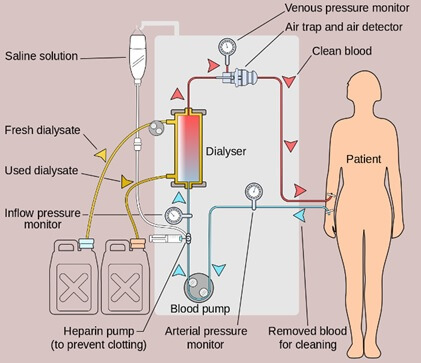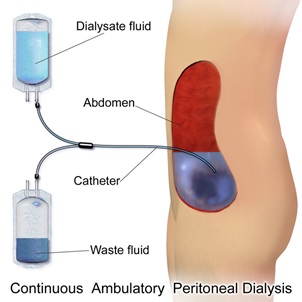Principle of Dialysis Assignment Help
Assignmenthelp.net provides 24/7 Bioinstrumentation Assignment Help to students from this academic area. Students can receive solutions for the complicated questions from the qualified tutors of this Assignment Help site.
The toxic substances in human body is removed by kidney. The functions of kidney is to extract waste substance from the blood and hence maintain body fluid. When one kidney fails, the other kidney does the entire work without affecting the normal body functioning. But when both kidney fails, the process of dialysis is used that helps to clear waste from blood helping the person to remain alive. Hence, Dialysis is a process that is applied to remove wastes or any toxic substances from the body when there is failure in working of both the kidneys.
Principle of Dialysis
The process of Dialysis is based on the principle of diffusion and ultrafiltration that runs across a semi-permeable membrane. Diffusion means the movement of fluid from the area of high-concentration to the area of low-concentration and Ultrafiltration is the process in which smaller particles are separated from the larger particles by a high pressure filtration under hydrostatic pressure forces.
- Semi-permeable membrane: This membrane is used to separate blood from dialysis fluid. This membrane allows passing or filtering of some substances from the rest by the process of diffusion.
- Blood supply: The better the supply of blood, the effective is the treatment.
- Dialysis fluid: It helps to remove waste products form the blood thus maintaining the balance of substances in the blood.
Writing Biology Course can be difficult at times, mostly when you are unclear about the concept. So, students wanting Assignment Help in Biology can come to us for any help in their Biology Course. We have field specific Biology tutors who can provide clear information on the topic that you find difficult or complex.
There are two types of dialysis; Hemodialysis and peritoneal dialysis.
Hemodialysis: In this case, blood is removed from the body and filtered through a dialyzer i.e. made by man, and returned back to the body. Therefore, dialysis machine along with special filter called a man-made filter i.e. dialyzer is used. To get the blood into the dialyzer, an access or entrance is made by doctor into the blood vessels. Hence three types of access are generally made: AV fistula (arteriovenous fistula), AV graft and central venous catheter. However, AV fistula is the most common of all. The main advantage of Hemodialysis is that patient need to do it only 3 days in a week, they are free rest 4 days from this process but there are certain disadvantages of this process as well. While applying this process, patient need to follow a restricted diet plan and secondly they need to make pre-arrangement for dialysis if they had to visit any place.

Peritoneal dialysis: In case of peritoneal dialysis, the lining of abdominal cavity along with dialysate is used to remove toxic substance from the body. The dialysis access is places in your belly and the peritoneal membrane of your body is used to filter the blood. The process is easy and can be done at home. The only risk that sustain in this process is the infection to the peritoneal membrane of stomach if not done properly. It is again of two types:
- Automated peritoneal dialysis (APD): In case of APD, the exchange is usually carried out at night when the patient is asleep. A machine named as cycler usually do the exchange work.
- Continuous ambulatory peritoneal dialysis (CAPD): In this case, the exchanges are manually done in every few hours. It almost takes half an hour to complete the exchange.
The major advantage of peritoneal dialysis is that it can be easily done at home and the instrument used is portable but again there is disadvantage as well. It must be done on regular basis and secondly, there is a high risk of getting infection of the peritoneum also called peritonitis.

Patient can get their blood test to ensure that their dialysis has been correctly performed. Blood Urea Nitrogen test also called BUN is performed to check the amount of waste product in the body.
How repeatedly is dialysis performed?
Dialysis is done 3 days in a week for 4-5 hours each day. Depending on the doctor’s instruction, you need to perform your dialysis treatment. A properly done dialysis treatment helps patient to live a healthier and safer life. The field of Bioinstrumentation has recently emerged as a separate branch in science. Students wanting to seek Biology Assignment Help in any field or sub-field can join us. We provide complete solution to Biology students along with explanatory diagrams and presentations. You can also get the assistance of our team your Biology projects and Biology reports.
Image reference: https://commons.wikimedia.org/wiki/File:Hemodialysis-en.svg, https://commons.wikimedia.org/wiki/File:Blausen_0160_CAPD.png


